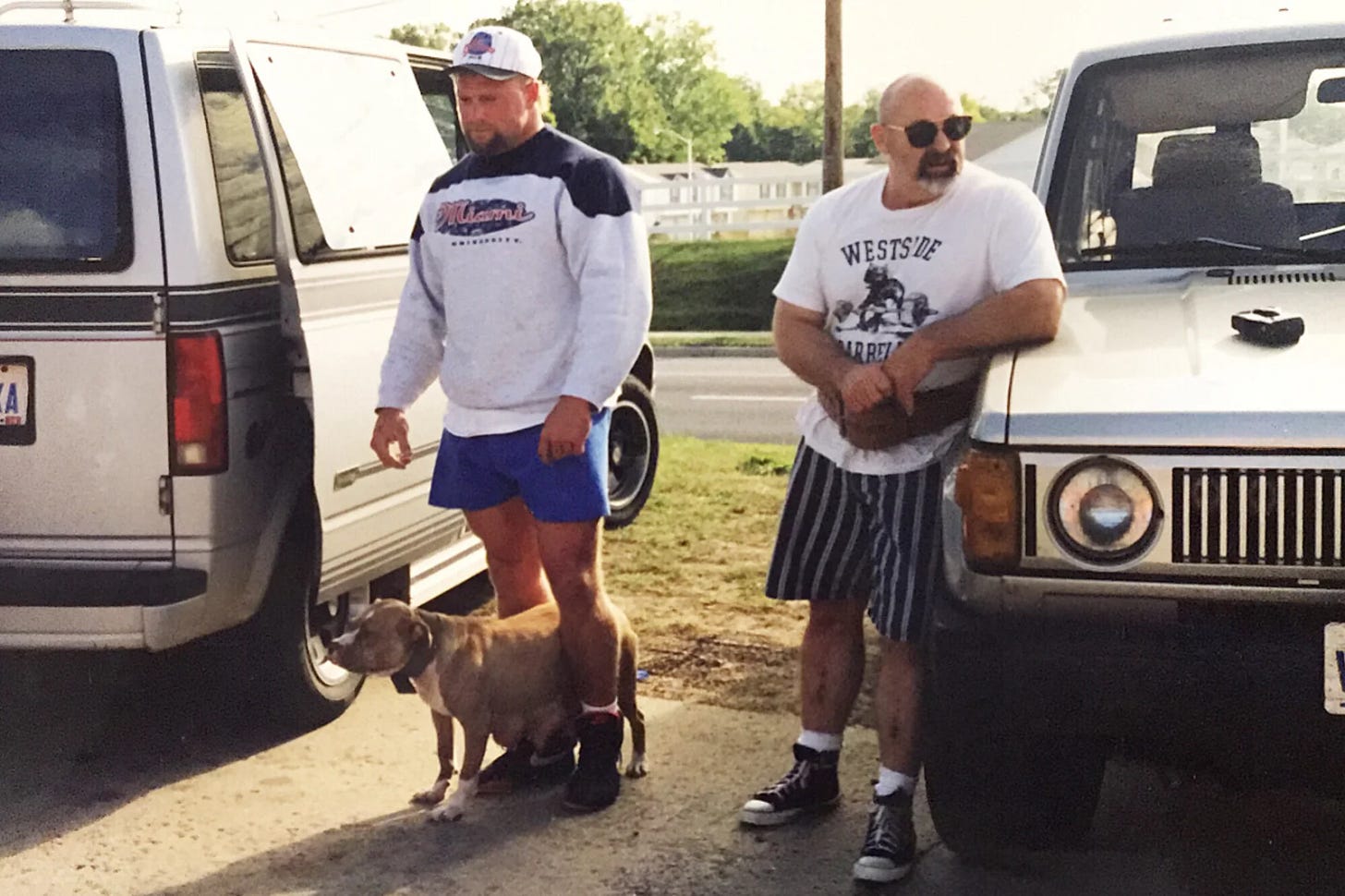Band Tension in Strength Training: Part 1 The Genesis
Desperation Drives Innovation: The Genesis of Band Tension

“Desperate Men Do Desperate Things”
I treated Louie Simmons every Friday at his Westside Barbell Club for years. Reflecting on those sessions, I clearly benefited more from them than Louie ever did. As we worked together to enhance his physical capacity—trying to get him to Point B, he generously shared his wisdom with me—though those stories are for another time.
Between treatments, Louie would share his strategies for managing pain. There were times when he would arrive with so much Rock Tape on his body that you would have bet he had an NIL sponsorship deal with them. I remember once jokingly asking if he was sponsored by Rock Tape. He looked at me and replied, "John, desperate men do desperate things." Meaning: we both understood that Rock Tape wasn’t a cure-all, but his relentless drive to improve drove him to try anything. One of Louie’s former training partners, Dave Tate, writes how the Westside approach has always been "try it first, then figure out why it works second."1
Louie was desperate to actualize his full potential as a lifter and as a coach. He was committed to maximizing the potential of the lifters he trained. This mindset embodies someone who isn't content with the status quo but constantly seeks innovation when faced with challenges, and one of those innovations was putting bands overtop of barbells.
The Challenge: How to Constantly Scale Up the CNS
Louie’s challenge was to put the sport of Powerlifting in an absolute stranglehold—and to do so meant he had to develop ways to constantly scale up the nervous systems of his lifters. Speculating on his mindset before the introduction of bands, I imagine him facing the necessity to innovate the reverse hyper to overcome the multiple serious back injuries he had previously experienced. Then later on innovating during the coaching of Matt Dimel, who became the first male to squat over 1,000 lbs—beating Dr. Fred Hatfield in the process, a feat Dr. Squat would accomplish—must have been a significant validation for Louie that he needed to not just be a coach but an innovator. These successful innovations2 had to be feedback for him to know that being both a coach and innovator that he was on the cusp of doing something that would put him a position to take the entire sport of Powerlifting.
During the time before Lou’s Westside Book of Methods he was writing for Powerlifting USA. In reading those articles its clear that Louie was writing with a confidence that he knew he had something no one else had, as him and his barbell club was performing training work that no one else was doing—and what he had we would find out later is a system that would scale up the athletes CNS like nothing we have ever seen before in this industry. Concepts from this system, no doubt created the neurological training paradigm we are currently living in that is generating systematic wide spread reactive strength injuries in the bottom-up biological component—connective tissue architecture.
If you can find it, one of my favorite articles was one that Tom Barry recently referred me to titled "I Disagree"—where Louie wrote about how he disagrees with the training work that others in his sport were endorsing—the essence of it was that his peers were performing suboptimal training work as they simply were not the innovators that he was. It's one of my favorites because, having lived and trained through the genesis of the neurological paradigm, like the majority of Absolute subscribers, it's evident that Louie writes with the confidence of someone who knows from real-life feedback that he is not only the authority and holds a true competitive advantage over his competition.
Bands Overtop of Barbells—Are You Crazy? Yes.
Another Louism is: "Normal people get you normal results and crazy people get you crazy results…"
Getting back on track to the challenge of putting the sport of powerlifting in a stranglehold and understanding Louie not just as a lifter and coach but as an innovator, it is easy to see how, even though it seemed crazy to his peers at the time, putting bands over barbells was a natural evolution and a match made in heaven for Lou. For those interested in the origins of this innovation, I highly recommend hearing Louie's firsthand account. In essence, Dick Hartzel introduced Louie to bands, and upon seeing them, Louie told me his immediate thought was that he needed to place these over barbells. The rest is history. Being an elite lifter, once he experienced the training effects, he knew he had struck gold.
"Dick Hartzell is the founder of Jump-Stretch Flexbands. This band system is used everywhere he goes, and he goes everywhere. I thank Dick every day when we put bands on the bar with weights. They have turned Westside into a very dominant power gym." — Louie Simmons3
In the same manner that A.S. Perlipin organized charts for the optimal loads for Olympic weightlifters to practice lifts, Louie organized the best loads for training a powerlifter's central nervous system (CNS)—meaning the training for absolute strength or speed strength.
“To Get Stronger, You Must First Get Smarter, Much Smarter.”
Keep reading with a 7-day free trial
Subscribe to Absolute: The Art and Science of Human Performance to keep reading this post and get 7 days of free access to the full post archives.




